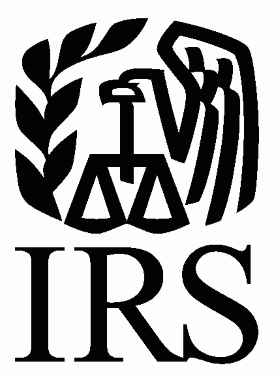| AREA OF TAX LAW |
OLD LAW |
UNDER 2018 TAX CODE |
| Tax Rates |
- The tax rates under the prior law were 10%, 15%, 25%, 28%, 33%, 35%, and 39.6%.
- The maximum tax rate of 39.6% applied to single taxpayers with taxable income of $418,400 or more and married taxpayers with taxable income of $470,700 or more.
- The capital gains rate structure included rates of 0, 15%, and 20% with the 20% rate starting where the 39.6% rate started.
|
- The new marginal tax rates are 10%, 12%, 22%, 24%, 32%, 35%, and 37%.
- The maximum rate of 37% applies to single taxpayers with over $500,000 of taxable income and married taxpayers with taxable income exceeding $600,000.
- There is no change to the capital gains rate structure. Thus, the top rate of 20% applies before individuals reach the 37% top rate for ordinary income ($479,000 for joint returns).
* Rates are effective Jan. 1, 2018 through Dec. 31, 2025 |
| Net Operating Losses (NOLs) |
- NOLs could be carried back two years or carried forward 20 years. Special rules for farm NOLs.
|
- The carryback of NOLs is repealed effective for tax years ending after Dec. 31, 2017.
- NOLs generated for years beginning after 2017 cannot reduce taxable income by more than 80%. NOLs carryforward indefinitely. Special rules apply for farm NOLs.
|
| Return of Property Wrongfully Levied Upon by the IRS |
- The IRS was able to return the proceeds of sold levied property within nine months of the wrongful levy.
|
- The new tax law extends the period to recover proceeds to two years from the date of the sale of the wrongfully levied property. The law also extends the period for bringing a civil action against the IRS for a wrongful levy to two years.
* This provision went into effect immediately upon the date of enactment of the law (Dec. 22, 2017). |
| Personal and Dependent Exemptions |
- Personal exemptions were $4,050 for the taxpayer, spouse, and each eligible dependent
|
- There are no personal or dependent exemptions under the new tax law.
* The repeal of these exemptions is effective through Dec. 31, 2025. |
| Shared Responsibility Penalty |
- Individual taxpayers were subject to a penalty for not maintaining minimal essential health insurance coverage.
- For 2017 and 2018, this penalty was the greater of a flat dollar amount calculated for each family member or an excess income amount.
- The flat amount per adult was $695 for 2017 and 2018, while the fee was ½ of $695 for individuals under the age of 18. The excess amount was 2.5% of the excess of a taxpayer’s household income over a threshold.
|
- The new law reduces the individual shared responsibility penalty to zero.
* For tax years starting Jan. 1, 2019. |
| Alternative Minimum Tax (AMT) |
- The AMT exemption under the prior law was $84,500 for married taxpayers who filed jointly, $43,250 for married taxpayers who filed separately, and $54,300 for all other individuals. The exemption was indexed for inflation.
|
- The AMT exemption amount has been increased to $109,400 for married taxpayers who file jointly and $70,300 for all other taxpayers (except marred taxpayers who file separately). The exemption phases out if Adjusted Gross Income (AGI) exceeds $1 million for married taxpayers and $500,000 for all other taxpayers. The AMT exemption is indexed for inflation.
* Effective Jan. 1, 2018 through Dec. 31, 2025 |
| Estate and Gift Tax Exemptions |
- Taxpayers were entitled to a unified estate and gift tax exemption, which was $5,490,000 in 2017.
|
- The new law doubles the estate and gift tax exemption to $10 million for gifts made and decedents passing after Dec. 31, 2017 and before Jan. 1, 2026.
- The $10 million exemption is indexed for inflation. The exemption is $11.18 million for 2018.
- Regulations will be provided at a future date to reconcile differences in the exemptions at the time of a decedent’s death and gifts made prior to death.
|
| 529 Plans |
- 529 plan distributions could be utilized tax free for qualified higher educational expenses, which included tuition, fees, books, supplies, and required equipment.
|
- 529 plans now allow for up to $10,000 in annual distributions for tuition of public, private, or religious elementary and secondary schools.
|
| IRA Contributions that are Re-Characterized |
- An individual taxpayer was allowed to make a contribution to one type of IRA (Roth or traditional) and re-characterize it through a trustee-to-trustee transfer as a contribution to the other type of IRA. The re-characterization was treated as a contribution to the subsequent type of IRA as of the date of the original contribution in the previous IRA type.
|
- The tax law repeals the ability to re-characterize conversion contributions to Roth IRAs. This prohibits taxpayers from unwinding Roth conversions.
- The new law still allows taxpayers to re-characterize contributions to a Roth IRA as contributions to a traditional IRA presuming the conversion happens prior to the due date of the individual’s income tax return.
* This provision is in effect as of Jan. 1, 2018. |
| 2016 Disaster Area Relief |
- There was no provision under the prior law that specifically related to 2016 disaster areas.
|
- The new act covers retirement plan distributions up to $100,000 between Jan. 1, 2016 and Dec. 31, 2017 for individuals whose principal place of residence was located in a presidentially-declared 2016 disaster area.
- The amount of the distributions (up to $100,000) may be ratably included in income over a three-year period starting with the year of distribution unless the taxpayer elects otherwise. This qualifying distribution is not subject to the 10% early-withdrawal penalty.
- If the taxpayer re-contributes funds that were previously taxed under this provision, they may file an amended return to reclaim tax paid on the income included for that period. If there is additional income that has not been recognized as of the date of the re-contribution, the portion of the distribution that should have been recognized under the ratable inclusion provision would not be taxable.
|
| Standard Deduction |
- The standard deduction was available to taxpayers who did not itemize deductions. It was $6,350 (single), $9,350 (head of household), and $12,700 (married filing jointly).
- Dependents who were claimed by another taxpayer had a standard deduction of the greater of $1,050 or $350, plus earned income.
|
- The new standard deduction is:
- $18,000 for head of household o $24,000 for married filing jointly
- $12,000 for all other taxpayers
* The increased standard deduction is effective Effective Jan. 1, 2018 through Dec. 31, 2025. |
| Deduction for Qualified Business Income |
- No provision in prior law
|
- The new law doubles the estate and gift tax exemption to $10 million for gifts made and decedents passing after Dec. 31, 2017 and before Jan. 1, 2026.
- The $10 million exemption is indexed for inflation. The exemption is $11.18 million for 2018.
- Regulations will be provided at a future date to reconcile differences in the exemptions at the time of a decedent’s death and gifts made prior to death.
|
| Home Mortgage Interest Deduction |
- Interest on acquisition indebtedness of up to $1 million and interest on home equity indebtedness up to $100,000 was deductible as an itemized deduction.
|
- The new law reduces the ceiling of acquisition indebtedness to $750,000, unless the indebtedness was incurred before Dec. 15, 2017, where the limitation is still $1 million. This reduced ceiling is in effect from Jan. 1, 2018 to Dec. 31, 2025.
* The deduction for home equity indebtedness is suspended from Jan. 1, 2018 to Dec. 31, 2025. |
| State and Local Tax Deductions (SALT) |
- Property taxes and state and local taxes that were not otherwise deducted on Schedules C, E, or F were deductible as an itemized deduction
|
- Under the new law, there is an overall limit of $10,000 for property taxes and state and local income taxes (or sales tax in lieu of income taxes). This provision applies from Jan. 1, 2018 to Dec. 31, 2025.
- Note that taxes prepaid in 2017 for tax years beginning Jan. 1, 2018 will not be deductible in 2017 as an itemized deduction. • Property tax on investment real property remains deductible as an itemized deduction.
|
| Charitable Donations |
- Charitable contributions were deductible as itemized deductions.
- Cash contributions to public charities were subject to a 50% of AGI limitation.
- Taxpayers could deduct 80% of donations made to colleges and universities where the payment allowed the taxpayer the right to purchase seating or tickets to athletic events.
|
- The new tax law made the following changes:
- The AGI threshold for cash contributions to public charities is increased to 60%.
- No charitable deduction is allowed for payments made to college institutions for the right to purchase tickets or seats at athletic events.
- The increased AGI threshold and denial for deduction for stadium seating rights are effective as of Jan. 1, 2018.
|
| Medical Expenses |
- Taxpayers could deduct out-of-pocket medical expenses that exceeded 10% of AGI.
|
- The new law reduces the AGI limitation to 7.5% for both regular tax and AMT purposes for 2017 and 2018
|
| Moving Expenses |
- Taxpayers could deduct out-of-pocket medical expenses that exceeded 10% of AGI.
|
- The tax law suspends the deductibility of moving expenses. The provisions related to members of the Armed Forces remain.
* Applicable for moves between Jan. 1, 2018 and Dec. 31, 2025. |
| Personal Casualty Theft Losses |
- Taxpayers could claim a deduction for losses incurred but not covered by insurance or other means of reimbursement. These losses were subject to a $100 limit and were further limited by a 10% AGI threshold.
|
- The new tax law limits the deduction to only losses that are attributed to federally-declared disasters.
* This revision is effective from Jan. 1, 2018 to Dec. 31, 2025. |
| Wagering Losses |
- Gambling losses were deductible as itemized deductions to the extent of gambling winnings.
|
- The new provision clarifies that other expenses related to the gambling are also subject to the same limitation, including otherwise deductible expenses traveling to and from a casino.
* This provision applies from Jan. 1, 2018 to Dec. 31, 2025. |
| Discharge of Certain Student Loan Debt |
- A taxpayer did not include in gross income amounts from the forgiveness of certain student loans, contingent upon him or her working in certain professions for a defined period of time.
|
- The new law includes discharges on account of death or disability in the allowable reasons for an exclusion.
* This provision applies to discharges of loans after Dec. 31, 2017. |
| Qualified Bicycle Commuting Reimbursement |
- A reimbursement of $20/month could be excluded from an employee’s gross income for qualifying bicycle commuting.
|
- If an employer continues to provide this benefit, it is taxable to the employee.
* This provision has been repealed effective Jan. 1, 2018 through Dec. 31, 2025.
|
| Exclusion for Reimbursement of Qualified Moving Expenses |
- Taxpayers who received reimbursement for qualifying moving expenses by their employer could exclude these reimbursements from gross income.
|
- The new law suspends the exclusion from gross income for periods starting Jan. 1, 2018 through Dec. 31, 2025.
- This suspension does not apply to members of the Armed Forces
|
| Miscellaneous Itemized Deductions |
- Taxpayers were able to deduct as a miscellaneous itemized deduction subject to a 2% of AGI limitation on a number of expenses, including (but not limited to) tax preparation fees, appraisal costs for charitable contributions, hobby expenses, investment fees, unreimbursed employee business expenses, the loss on traditional or Roth IRAs upon full distribution, repayments of previously taxed income, and safe deposit box rental fees.
|
- The new law suspends all deductions that were subject to the 2% AGI limitation.
* This provision is in effect from Jan. 1, 2018 through Dec. 31, 2025. |
| Limitation on Itemized Deductions |
- Prior law applied a limitation on itemized deductions as the taxpayer exceeded certain income amounts. Total itemized deductions could not be reduced by more than 80% of the total deductions.
|
- The repeal of the overall limitation on itemized deductions is in effect from Jan. 1, 2018 through Dec. 31, 2025.
|
| Deduction for Alimony Payments and Inclusion of Alimony Payments as Income |
- Alimony paid was deductible by the payor spouse.
- Alimony received by a spouse was included in gross income.
|
- The new law repeals the deduction for alimony paid and the inclusion of alimony received for divorce decrees executed after Dec. 31, 2018
|
| Child Tax Credit |
- Individuals with qualifying children under the age of 17 were eligible for a $1,000 per child credit. This credit was allowed for regular tax and AMT purposes. Families with three of more children utilized an alternative formula for the calculation of their credit if it would produce a more favorable result than the earned income calculation.
|
- The new tax law increases the credit to $2,000 per qualifying child and raises the threshold at which the credit is phased out. The maximum refundable credit is capped at $1,400 per qualifying child.
- In order to qualify for this credit, the taxpayer must include a valid Social Security number (SSN) for each child the credit is being claimed on. The SSN must be issued prior to the filing of the return to be eligible.
|
| Family Tax Credit |
No family tax credit existed under the prior law. |
- The new tax law allows for a $500 nonrefundable credit for qualifying dependents that are not qualifying children of the taxpayer.
- The requirements for a valid SSN for the child tax credit is not in effect for the family tax credit.
|





